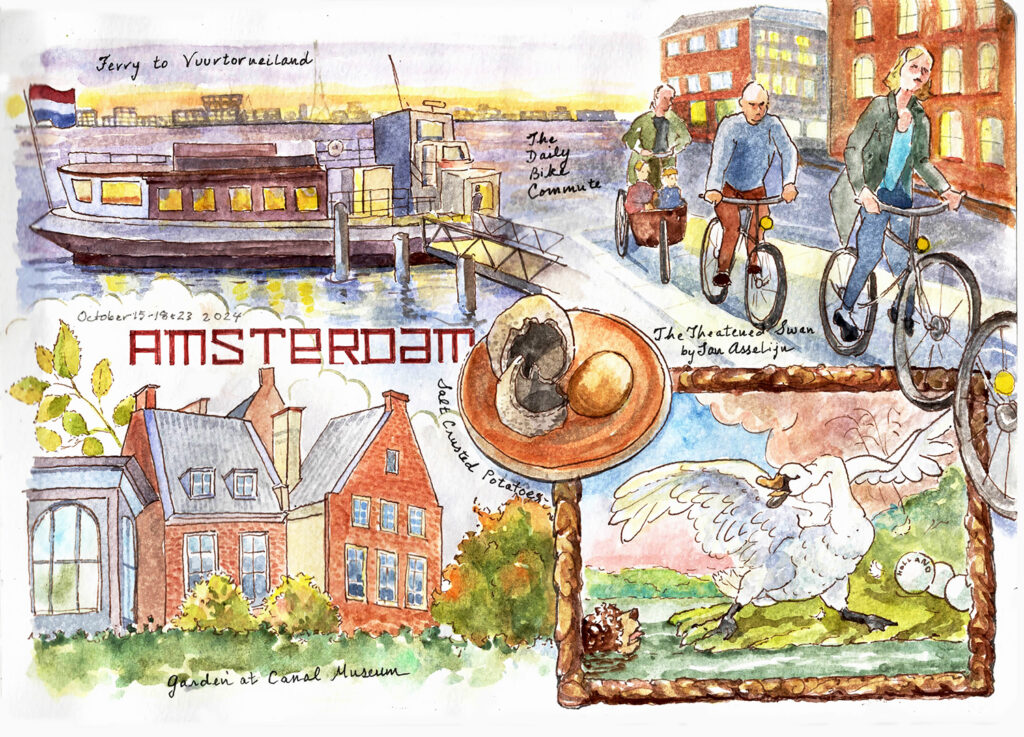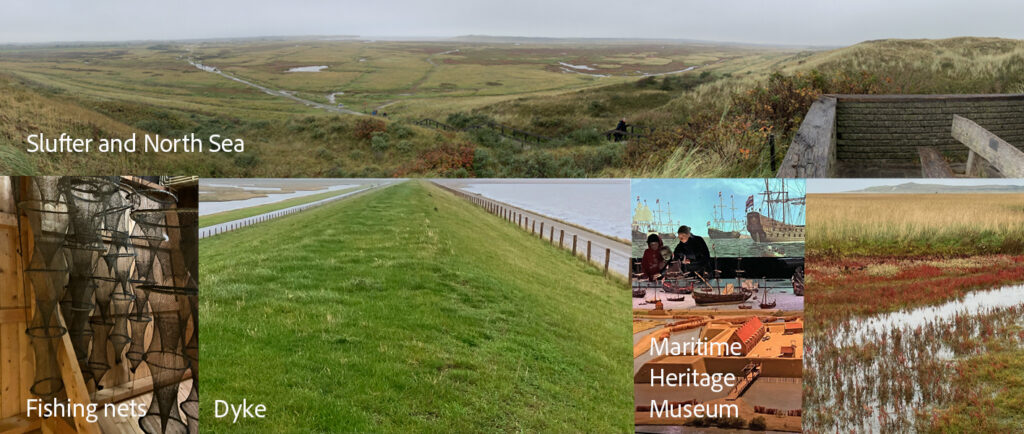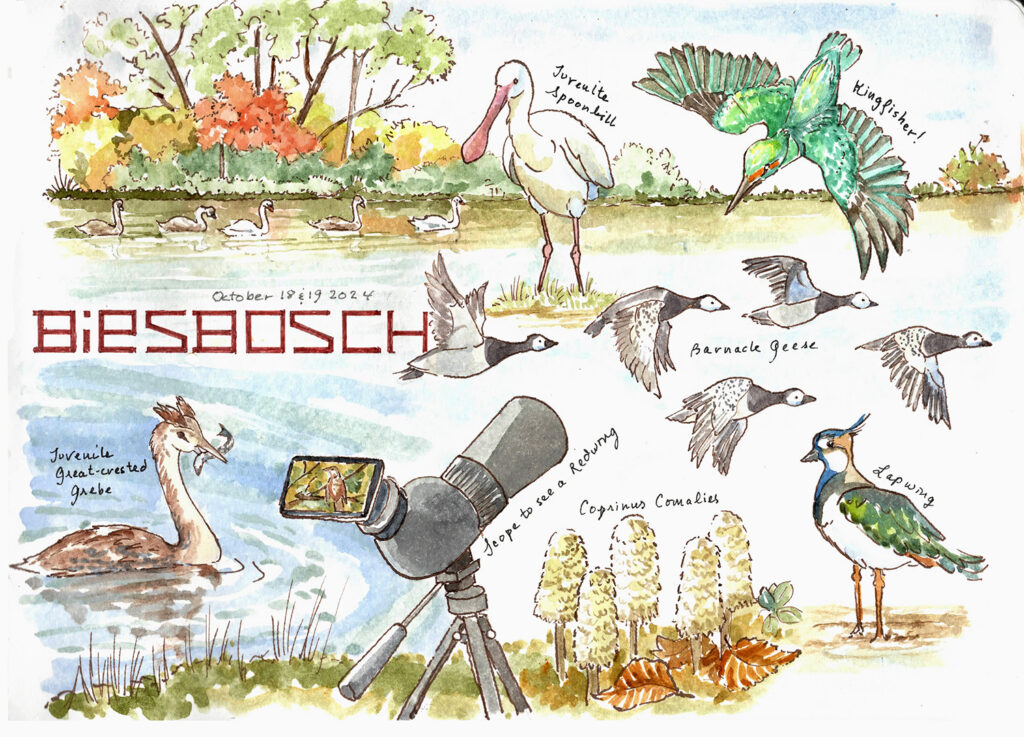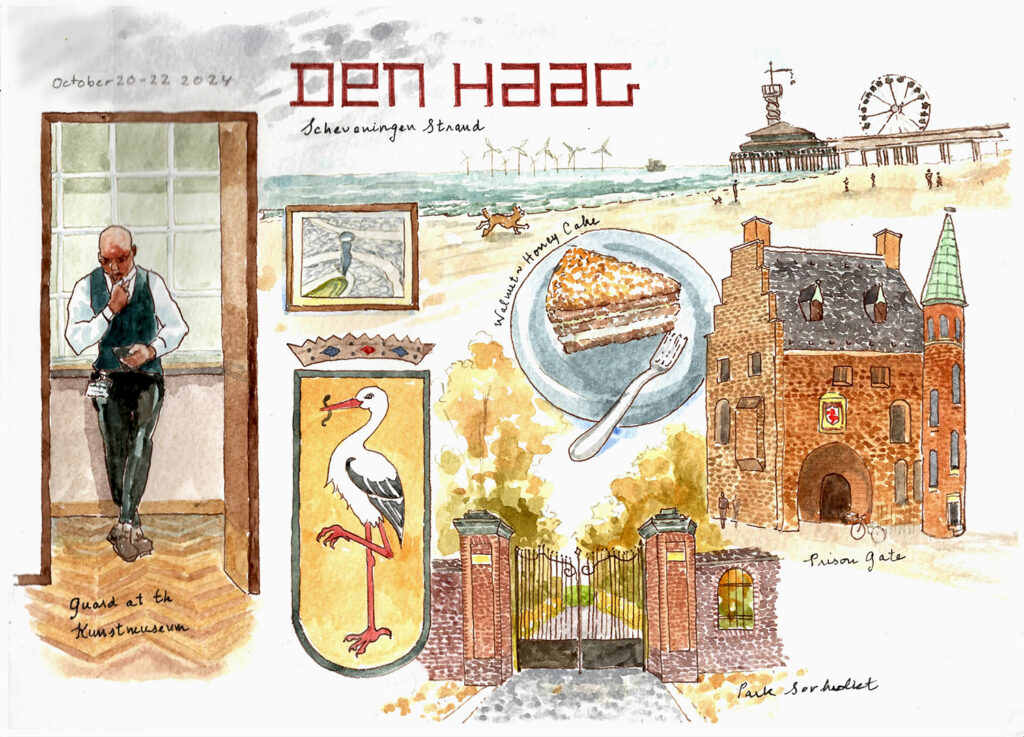
It’s been 11 years since I last visited Amsterdam with my friend Maureen. I had had such an enjoyable time that I wanted to go back, and this time, expand my sights outside of the city. I took the train there; TGV to Bruxelles; to have changed to the Eurostar to complete the journey. The Eurostar cancelled, so I just took the Intercity train instead. I used InterCity throughout this trip—from Amsterdam to Dordrecht to Den Haag and back to Amsterdam. It’s a great system—super reliable, and there are many trains per day, so I never felt stressed about missing my train, as there was always another one soon after.
I decided to stay in a hotel down near the museums as visiting them was the main reason for my going to Amsterdam. On my first day I went right to the Rjikmuseum, where I had made a reservation for 10:00. I met a Dutch friend of a friend for coffee at their pleasant café. Along with the amazing Rembrandts & Hals, I discovered a rather crazy 17th-century painting by Jan Asselijn representing a fierce swan protecting her nest. Just before the time it was painted, the little Dutch republic had achieved independence from Spain. The country had enemies in France, England and Spain so the painting was meant as an allegory for their version of “Don’t tread on me”.
That evening, I had the best dinner experience of my life. I had been attracted to Vuurtoreneiland‘s handsome website, and taking a ferry to the lighthouse island for dinner seemed like a fun idea. Little did I expect just HOW great it would be. A refurbished 100-year-old wooden ferry picked us up. On the ride out, we enjoyed nibbles, wine & beer, and got to meet the other guests. I was the only non-Dutch person, except for a Venezuelan fellow, who was there with his Dutch girlfriend. I used my rudimentary Spanish to speak with them. (Just about everyone in the country speaks English; I just wanted to practice my Spanish!). Once docked, each of the guests was handed a kerosene lantern, and we proceeded, fairy-like, to the renovated fortress, which housed the restaurant. Even though I was the only unattached attendee, I was treated royally, and given a great seat next to the handsome open kitchen, where I could observe the beautifully-choreographed service. The atmosphere among the cooks was calm and friendly; no typical kitchen drama—I could barely tell who was the chef. The food was the best I ever had tasted. Subtle and complex flavours were composed brilliantly. We had paper-thin horse radish in an oyster sauce; Sea Bass with a cardamom & pepper sauce (normally I don’t like peppers, but they had removed the skins so this wasn’t a problem). The most interesting course was a potato baked in a salt & ash crust with a sorrel sauce. I have never had a potato that tasted so great!

I returned to Amsterdam at the end of my trip. That last day I chose to relax, spending half the day at the Grachtenmuseum (Museum about the canals). The exhibit explains how, under the whole of the city, long tree trunks reach meters down through the unstable mud to solid ground in order to support the buildings (now the pillars are concrete). There was also an exhibit about he Dutch elm trees, which suffer so from disease. They are working on varieties that are less vulnerable, and throughout the whole city, every tree is monitored. I also sat in a deck chair to listen to music by Bert Barton, based on the sound of the sap. Soothed by this installation, I went out into their pretty garden, and watched the birds. Later, I had a lovely massage at Essence Spa. I didn’t care for the Andaz hotel, in which it was housed (brash & obnoxious) though.
I was curious about trying Indonesian food. As Indonesia was a colony through the Dutch East India Company, there are many Indonesian restaurants in the Netherlands. I can’t say I cared for it, and had better luck with Indian (in Den Haag, the Maharani), and Japanese (though, as in most Japanese restaurants on the continent, there is a sore lack of variety in dishes).

The day after my Vuutorneiland experience I had booked a tour of the largest of the Frisian archipelago, Texel (pronounced Tessel) with Dutch Tours. I found out that no one other than myself had booked this, and worried it was to have been cancelled. But Eva, who runs the tour company with her friend, let me know that, because she loves going to Texel so much, she would give the tour for me alone! I was really lucky on this trip to the Netherlands—perhaps the two 4-leaf clovers I found on my first day had something to do with this?

We drove up the peninsula and took a car ferry to Texel. We got to a great bird-watching site over the Wadden sea (a UNESCO World Heritage Site) and walked along the dyke which prevents the sea from flooding the island. There was an old windmill there, but Eva explained that the water management is mostly done with electric pumps (modern windmills are ubiquitous in the Netherlands). I am amazed at how completely artificial is the existence of the below-sea-level country. Sluices perforate all the fields to drain off water. The country depends on its rigorous periodic dredging of these channels. There is no excuse for deferred maintenance of the infrastructure here. Unlike the rest of Europe, which has recently experienced terrible floods, the Dutch feel secure, as the government keeps an eye on all the working parts of this incredible system. Should a new area need to be converted to wetlands to keep the delicate balance, so be it. If you’re interested in the history and maps of Dutch water management, here’s a good Youtube video. I was happy to learn that there is the Ramar convention to protect the wetlands.

On the other side of the island is De Slufter, a huge salt marsh which stretches several kilometers out into the North Sea. Only at the very highest tides is it flooded. Rivulets stream through the salt-impervious glasswort (Salicornia europaea)-covered zone. We also visited the Marine Heritage museum, where I watched an impressive video and ship model installation. I thoroughly enjoyed my trip to Texel, and appreciated the company of the knowledgeable and friendly Eva.
Back in Amsterdam, I visited the Van Gogh museum, home to most of the artist’s paintings. I was very moved, following along the history of this poor man’s sad life. I took the train to Dordrecht afterwards, arriving in time for a terrific lunch at Café Buddingh.

After a day spent birdwatching with my avid birdwatcher great nephew this past summer, I I had decided to visit the National Park of Biesbosch with a professional birdwatcher, Adriaan Sleeuwenhoek,, whose youtube channel shows his videos.

We met up at 7:30 in the morning to listen to and watch the first stirrings of the birds. At a dock not far from the Stayokay lodge, where I slept, we were rewarded with a remarkable kingfisher display. The iridescent bird circled around us and over the water, showing off his plumage from every vantage point. That made a great start to our day. It was drizzly, but not cold, as Adriaan took me to three main spots in the park for birdwatching. The Park has many picturesque sites, “Polder” is the name for all the low-lying zones which make up most of the park. The flora wasn’t as interesting as the fauna, but we did see “Lawyer wig” mushrooms, which made us laugh.
The Biesbosch is a fresh-water tidal region with three sections, riddled with waterways. The Nieuwe Merwede River (which we crossed by a little ferryboat) separates east & west. Back in the 15th century, the St. Elizabeth’s flood submerged what was then cultivated land with waters from the Rhine and Meuse rivers. Up until the 1990’s land was being reclaimed to try and recreate the pre-flood geography. Happily for the birds, plants and unique ecosystem, reclamation is being reversed, allowing the land and water to reach a more natural balance.
Adriaan took me to the distinctive regions where we could observe different kinds of birds. With his scope, I could finally appreciate why ducks are such an obsession for birdwatchers—they each have a unique look, often with colorful feathers. We watched a juvenile Great Crested Grebe spend a great deal of energy trying to swallow the struggling minnow it had caught. I love the hairdo of this bird, which reminds me of the top-of-the-head double-bun young girls often wear. We saw flocks of Lapwings, and several varieties of migrating geese. I learned how to listen and search for some of the shyer birds (rewarded with sightings of Fire- and Goldcrests, Long-tailed tits, and Redwings). Across a sandbar looking northwest, we witnessed first, two juvenile White-tailed eagles, then a third, adult, resting comfortably among smaller birds which might otherwise have reason to fear them. It is mysterious how predator and prey have their own ways of communicating.
The last bird we witnessed, perched on a lamp over the highway bak to Dordrecht, was a stork, appropriately, as the stork is a symbol of the next city I was to visit.
The following day, Sunday, I trained up to Den Haag (The Hague). The elegant hotel I stayed at, Paleis Hotel, was the nicest of this trip. I had been drawn to the city not only for its excellent art collection, but also, in this time of wars, that it hosts the International Tribunal, and the Peace Palace. Alas, I wasn’t able to visit the inside of the Peace Palace, and could only pay my respects from outside its gates.

Sunday turned out to be one of the few sunny days I had in the Netherlands, and so I walked to Scheveningen beach, where the strand is very wide, even at high tide. The three-fish symbol for Scheveningen is embedded in the sidewalks near the shore, hearkening to the importance of fishing to the city’s history. I found hundreds of tiny sand dollar shells in the tidal pockets. I had not seen sand dollars since California—and these were the tiniest imaginable. In Den Haag, I spent most of my time walking around, as Sunday and Monday are days when most things close. I was amazed to see, that under this great city is metres-deep of nothing but sand. I was able to visit the Kunstmuseum, where they had an excellent Léon Spilliaert (early 20th century painter) / Dirk Braeckman (contemporary photographer) “Night Wanderers” show. I knew of Spilliaert’s work, which is mostly in india ink and very eerie. The Braeckman photos were equally mysterious; mostly night scenes with ambiguous meaning.
Of course, one of the main reasons to go to Den Haag was the Mauritshuis, the home of Rembrandt’s “Anatomy Lesson”, Vermeer’s “Girl with Pearl Earring” and “View of Delft”, along with the perfect “Goldfinch”, by Carel Fabritius. This amazing collection is housed in the former home of John Maurice, former slave trader and governor of Dutch Brazil. The museum doesn’t obfuscate its bloody foundations. While I was there, they had an unusual exhibit called “The lost museum” which showcased an eclectic variety of curios collected from all corners of the colonial world. Weird Japanese ghost sculpture opposite South American feather-work among bits and pieces (extraordinarily crafted, of course) such as musical instruments, porcelain and weapons. All witnesses to the violence of European colonisation.

I really like the Netherlands. I love its broad landscapes and big skies. The people seem easy-going and I had no difficulties getting around. Its art and natural riches will always beckon me back

What a gift your reports and illustrations are. Thank you! (And miss you.)
Thank you Nancy for your kind words. Hope you are doing well and not too floored by the election. I am grateful not to be in the States right now.